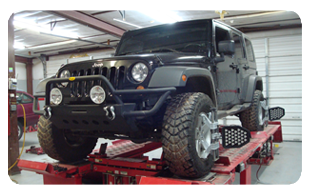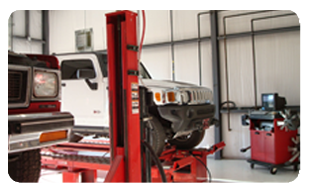What Everyone Should Know About Wheel Alignment
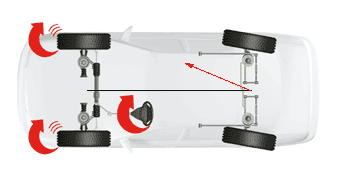 On this vehicle, the front wheels are not aligned to the rear
thrust line. This can happen from normal wear and stress,
whether your vehicle has adjustable or non-adjustable rear
suspension. On this vehicle, the front wheels are not aligned to the rear
thrust line. This can happen from normal wear and stress,
whether your vehicle has adjustable or non-adjustable rear
suspension.
To steer straight ahead, you would have to steer the front wheels
slightly to the right.
A common result would be that the vehicle
would "dog track" and possibly "pull" to the side.
Of course, the angles are exaggerated so you
can more easily see the condition. But it takes only a small
misalignment to create problems.
Why Four Wheel Alignment?
Reduced Tire Wear
Improper alignment is a major cause of premature tire wear. Over
the years, a properly aligned vehicle can add thousands of miles
to tire life.
Better Gas Mileage
Gas mileage increases as rolling resistance decreases. Total
alignment sets all four wheel parallel which, along with proper
inflation, minimizes rolling resistance.
Improved Handling
Does your car pull to one side? Does the steering wheel vibrate?
Do you constantly have to move the steering wheel to keep your
car traveling straight ahead? Many handling problems can be
corrected by total alignment. With all the system components
aligned properly, road shock is more efficiently absorbed for a
smoother ride.
Safer Driving
A suspension system inspection is part of our alignment
procedure. This allows us to spot worn parts before they cause
costly problems.
Here's what we do:
For vehicles with non-adjustable rear suspensions
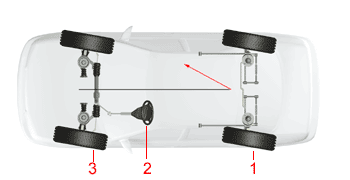
- Angle readings are measured at all four wheels.
- The steering wheel is centered.
- Front wheels are referenced to rear thrust line and set to specifications.
Result: All four wheels are parallel and the steering wheel is centered.
For vehicles with adjustable rear suspensions
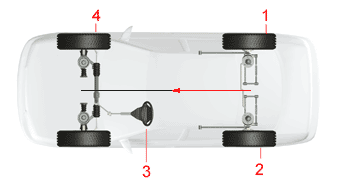
- Angle readings are measured at all four wheels.
- Rear wheels are set to specification. (Rear thrust line corresponds to
vehicle centerline.)
- Steering wheel is centered.
- Front wheels are referenced to the rear thrust line and set to specification.
Result: all four wheels are
positioned straight ahead and parallel, and the steering wheel
is centered.
Important Questions About Wheel Alignment
Q. How important is wheel alignment?
A. Think of it this way. Research indicates that the average car is driven
about 12,000 miles per year. A car with toe alignment just 0.34 degrees
(Just 0.17 inches) out of specification has dragged its tires sideways for more
than 68 miles by the end of the year!
Q. What are the “symptoms” of a car that's out of alignment?
A. Have your car checked if you notice:
- Excessive or uneven tire wear.
- Steering wheel pulls to the left or right.
- Feeling of looseness or wandering.
- Steering wheel vibration or shimmy.
- Steering wheel is not centered when car is moving straight ahead.
Q. How often should I have my car aligned?
A. Follow the vehicle manufacturer's recommendation noted in your owner's manual.
But, as a general rule, have your vehicle's tires checked every 10,000 miles or
at least once a year.
Information in this section provided by Hunter Engineering.
|
